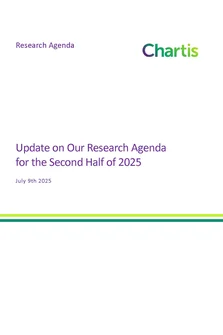<p>A lack of effective risk management played a big part in some of the high profile failures in the insurance industry. Studies of these failures demonstrate that traditional methods and systems for measuring and managing risk cannot cope with today's insurance companies' complexity and size.<br />
Current European Union solvency rules date back to the 1970s and mainly cover insurance or reinsurance risks. Solvency II is a new set of solvency requirements for European insurers and reinsurers, which takes a modern risk-sensitive approach. Solvency II was formally approved by the EU's Economic & Financial Affairs Council in May 2009 and should come into effect in 2012.</p>
<p>Solvency II will require insurers to have transparent internal control systems and provide adequate protection for policyholders. The new rules require insurers to hold additional capital against credit risk, market risk and operational risk. Insurers will be obliged to implement processes and systems for continuous identification, measurement, mitigation and monitoring of these risks.</p>
<p>Another objective of Solvency II is to harmonise insurance industry regulation in the EU and ultimately across the globe. The aim is to remove many of the regulatory arbitrage opportunities and inconsistencies that exist between different national markets.</p>
<p>In the medium to long term, large and diversified insurers are likely to benefit from the new rules, which could lower their solvency margins by up to 35%, thus freeing up capital to invest in growing their businesses. Chartis believes mergers and acquisitions and cross-border consolidation activities will accelerate as a result.</p>
<p>Chartis forecasts the Solvency II technology market to grow to $1.67 billion by 2013 at a compound annual growth rate of 19.2%. The 2.1% increase from our 2009 forecast reflects the growing cost and complexity of implementing Solvency II technology projects. For example, hiring and retaining staff able to manage sophisticated Solvency II projects has become a greater cost than anticipated.</p>
<p>Solvency II has already had a profound impact on many insurance companies' technology strategies. Becoming Solvency II-compliant should be viewed as a one-off opportunity for insurers to design and implement an integrated risk management system. IT departments will be at the forefront of the integration of risk and finance functions and systems. It is essential for them to review their strategies for enterprise technology architecture, data management as well as business intelligence and analytics capabilities.</p>
<p>Some technology and consulting firms have already developed new tools and services to help clients meet Solvency II requirements. These include established consultants and technology companies such as Towers Watson, SunGard and EMB. They have developed actuarial and financial modelling tools and analytics supported by their extensive consulting services. New entrants such as Algorithmics, Moody's Analytics, FRSGlobal and SAS have extended their risk management offerings and developed modules specifically for the insurance industry. Furthermore, a number of operational risk and governance, risk and compliance (GRC) vendors have turned their attention to the Solvency II market including Wolters Kluwer, OpenPages and Mega.</p>
<p>This report is an update of one first published in 2009. It surveys both the demand and supply side of the Solvency II technology market and includes new information on industry trends and business requirements. It covers the main market, regulatory requirements and the competitive landscape. The report includes an updated forecast of market size, vendor profiles, best practice descriptions and market dynamics analysis.</p>
<p>Vendors covered in the report include: Algorithmics, SAS, DFA, Moody's Analytics, Towers Watson, SunGard, SAP, EMB, Milliman and FRSGlobal.</p>
<p> </p>
<p> </p>
<p> </p>
<p> </p>
<p> </p>
<p> </p>
Only users who have a paid subscription or are part of a corporate subscription are able to print or copy content.
To access these options, along with all other subscription benefits, please contact info@chartis-research.com or view our subscription options here: https://www.chartis-research.com/static/become-a-member
You are currently unable to print this content. Please contact info@chartis-research.com to find out more.
You are currently unable to copy this content. Please contact info@chartis-research.com to find out more.
Copyright Infopro Digital Limited. All rights reserved.
As outlined in our terms and conditions, https://www.infopro-digital.com/terms-and-conditions/subscriptions/ (point 2.4), printing is limited to a single copy.
If you would like to purchase additional rights please email info@chartis-research.com
Copyright Infopro Digital Limited. All rights reserved.
You may share this content using our article tools. As outlined in our terms and conditions, https://www.infopro-digital.com/terms-and-conditions/subscriptions/ (clause 2.4), an Authorised User may only make one copy of the materials for their own personal use. You must also comply with the restrictions in clause 2.5.
If you would like to purchase additional rights please email info@chartis-research.com


